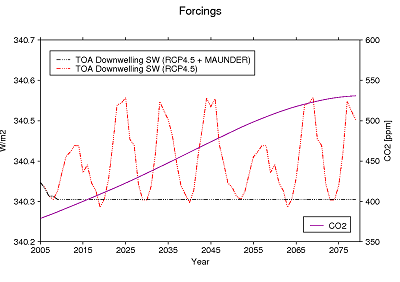ACADEMIA
The effects of solar activity on climate change are analyzed using the 'Finis Terrae'
- "No simulations that would include these effects in a realistic way of the future climate with a model at this scale "said the researcher Juan Antonio Anel.
- Most of the project results will be obtained in 2013.
Studies of the Intergovernmental Panel on Climate Change (IPCC) established by the UN in 1988 for years warned of the risks to ecosystems and people themselves excessive heating of the atmosphere due to human action. But their predictions are made keeping and fixed the amount of solar radiation received at Terra, although this is variable.
Now, a project developed jointly by the University of Vigo, Universidad Complutense de Madrid, the National Atmospheric Research Center of the U.S. and Britain's University of Oxford is performing at the Supercomputing Center of Galicia (CESGA) advanced simulations provide for this variability.
The Juan Antonio Anel Ourense, head of research in climatology at the Smith School of Enterprise and the Environment at Oxford University in Britain, remembers that the simulations of the impact of solar activity on Earth's climate "require very detailed climate models to implement different solar radiation conditions, "which involves intensive computing power a supercomputer as 'Finis Terrae' CESGA: This project is one of the top consumers of hours of calculation of the center.
Historically, the episode known as the Maunder minimum, happened between 1645 and 1715 - was characterized by a lower presence of sunspots and solar radiation and under the constant current having a smaller effect of global warming a few degrees. This does not seem much but it is you have in mind that it is accepted that a warming of our planet than two degrees above pre-industrial levels is considered dangerous.
Dr. Anel stresses that "the newness of our project is that there were simulations that would include these effects in a realistic way of the future climate with a model at this scale," and those made in the IPCC scenarios used CESGA but applying different numbers of solar radiation to see how a minor warming of solar origin could offset generated by humanity. It is anticipated that these simulations are incorporated into the analysis of the IPCC, as contemplated in these different climate models should be comparable and should be the same process with them, but their use is contemplated Meteorological Organization reports Global comparison between models of Earth's climate. Most of the project results will be obtained in the year 2013.


The image shows the results of simulations comparing the CESGA moderate scenario of carbon dioxide emissions with a similar one and taking into account solar activity constant. The purple line is the increase in carbon dioxide and can be seen as short-wave radiation emitted face down from the top of the atmosphere varies according to the eleven-year solar cycle in the first case and constant in the second.
Supercomputing Center of Galicia (CESGA) that depends on the Ministry of Economy and Industry of the Xunta de Galicia and the Higher Council for Scientific Research (CSIC) is an organization with a history of more than 19 years. Her to investigate, promote and disseminate compute-intensive services and advanced communications to research communities and CSIC Galicia, as well as those companies or institutions that request it. www.cesga.es For more information contact: Juan Antonio Anel (University of Oxford)
juan.anel @ smithschool.ox.ac.uk Gabriel Chiodo (Universidad Complutense de Madrid) 91 394 5238
gchiodo@fis.ucm.es Luis Gimeno (Universidade de Vigo) 988 387 208
l.gimeno @ uvigo.es


 How to resolve AdBlock issue?
How to resolve AdBlock issue?